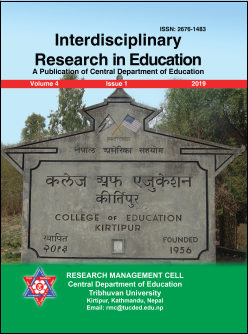Significance of Teaching the Pronunciation of Segmental and Suprasegmental Features of English
DOI:
https://doi.org/10.3126/ire.v6i2.43539Abstract
Pronunciation is an essential and rudimentary facet of language involved in an oral communication. This article attempts to highlight the significance of teaching the pronunciationof segmental and suprasegmental features of English. The segmental features involve consonant and vowel sounds or phonemes, whereas the suprasegmental features include stress, rhythm, intonation, pitch, length etc. The central function of a language is for communication through speech. The speech is sequences of the pronunciation of segmental as well as suprasegmental features. At least, legible pronunciation is essential for anunderstandable communication. Legible pronunciation of any one of Standard British English (SBE), Scottish Standard English and General American English (GAE) is indispensable for the proper and effective oral communication in the global context. Standard British English (SBE) is normally used in context of teaching English to the students in Nepal. It is a difficult task to teach the standard pronunciation to the students whose native tongue is not English, but teaching pronunciation can improve their ways of speaking to some extent. There is not always one-to-one corresponding correlation between spellings and their sounds in words. A spelling may retain different sounds in different phonetic environment. The article writer has pinpointed some instances where the wrong pronunciation of a speaker can lead to a misleading communication. To avoid the wrong or unintelligible pronunciation, it is necessary to teach the intelligible or standard pronunciation of English to our students.
Downloads
Downloads
Published
How to Cite
Issue
Section
License
This license enables reusers to distribute, remix, adapt, and build upon the material in any medium or format for noncommercial purposes only, and only so long as attribution is given to the creator.




